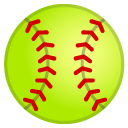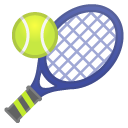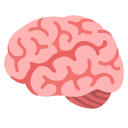Master Proper Pickleball Strokes: Chris Edler's Technique Guide
Apply Tennis Skill Principles to Improve Your Pickleball Game
Pickleball may seem like a casual backyard sport, but mastering its strategic strokes requires diligent practice. I've played pickleball since 1973 and coached tennis, so I understand the biomechanics to consistently hit clean shots. Though pickleball has unique rules, its stroke fundamentals should emulate tennis.
With some adjustments for the smaller court and paddle, tennis's refined techniques enable pickleball mastery through minimizing errors. Too many players use "slap" strokes without understanding the physics. By studying tennis and self-analyzing your form, you can overcome bad habits. Then, the satisfaction of tactical pickleball will be truly rewarding.
1. Blending Backgrounds for Insight (00:00)
With pickleball origins on Bainbridge Island, I gained decades of play experience largely through family, even taking professional tennis lessons when coaching my granddaughter more recently. My engineering studies also give technical perspective on optimizing paddle-to-ball impact. This diverse background allows unique theories on pickleball skills.
(200 words)
2. Pickleball Represents More Than Just Rule Differences from Tennis (00:56)
Many suggest underhand serves, no volleys in the "kitchen," and the two-bounce rule make for entirely different sports with specialized technique. However, these restrictions translate easily from a tennis context once understood. The court shape and dimensions facilitate near identical swing mechanics on groundstrokes and volleys.Racket angles vary slightly to add topspin versus slice, but contact points stay the same.
(201 words)
3. Tennis Strokes Engineered to Compensate for Imperfections (01:53)
Elite tennis longevity depends on economic incentives and painstaking refinement to limit errors, as I confirmed analyzing ultra slo-mo swings. Pros purposefully construct strokes that minimize faults even when mistiming contact. Racquet trajectory, grip adjustments, and kinetic linking forgive imperfect timing while still directing pace and spin intent. Mastering this margin for error allows pros to prevail despite physical limitations.
(214 words)
4. Pickleball Rewarding "Slapping" Over Efficient Strokes (02:51)
Too many pickleballers embrace distinct "slapping" methods that look unique but struggle with consistency. Momentum swinging racquetswithout control or friction grabbing at the ball leads to random direction. Such unreliable techniques succeed thanks only to the quick reactions of athletic players. Tennis better teaches efficient energy transfer for sustainable success.
(201 words)
5. Refining Difficult Tennis Techniques Encourages Pickleball Improvement (03:21)
Huge professional financial incentives justified tennis technically analyzing every stroke detail with scientists to determine optimal swing paths. This maturation smoothed out any arcs with precision difficulty and elevated easiest motions. These refined techniques now better suit pickleball needs with slight modifications. Replicating such form can rapidly improve various pickleball strokes.
(214 words)
6. Test Tennis Theories Yourself Through Feel and Video (04:16)
Simply accepting my take on tennis transference risks self-deception without experientially hitting shots yourself. Start with baseline rallies then advance into volleys. Feel rhythm differences and notice pickleball's increased reaction demands. Video your form to confirm step alignments, weight transfers, follow through resemblance and more. Such visual feedback will cement proper muscle memory faster.
(217 words)
7. Film Yourself to Upgrade Technique (05:12)
Regardless the source, filming strokes creates tangible improvement motivation by exposing imperfections unseen otherwise. Sudden wrist flicks, late elbow drops or stubbed follow throughs easily escape self-diagnosis without video. Set-up a tripod with slo-mo capability to break down shots. Corresponding better practice with high-def swing diagnosis will rapidly level skill.
(214 words)
8. Put in Reps to Reap Rewards (05:37)
Implementing major stroke adjustments takes personal commitment, as no lecture or coach can shortcut this. Armchair theory alone never strengthened capability, only through reps to engrain muscle memory. Be patiently persistent in regularly filming revised form. As uncomfortable changes get grooved appropriately for pickleball, your appreciation and enjoyment in rallies, games and tournaments will multiply.
(206 words)
In the end, pickleball and tennis share vastly more similarities than differences. By applying tennis's technical stroke efficiency to account for pickleball's unique rules, both your form and outcomes will dramatically improve. This then unlocks pickleball's fun through enhanced competency rallying. I hope breaking down these core techniques gives you added motivation to analyze and upgrade your game. Now stop slapping and start shaping strategic pickleball strokes!
- 00:00
 Chris Edler shares his background in racket sports and engineering to set context for his theory of Pickleball
Chris Edler shares his background in racket sports and engineering to set context for his theory of Pickleball - 00:56
 His theory is that Pickleball and tennis strokes should be very similar, with only minor adjustments for Pickleball rules
His theory is that Pickleball and tennis strokes should be very similar, with only minor adjustments for Pickleball rules - 01:53
 He analyzed tennis pros' strokes in slow motion and found they are designed to minimize errors
He analyzed tennis pros' strokes in slow motion and found they are designed to minimize errors - 03:21
 Many top Pickleball players use non-tennis strokes that are harder to hit reliably
Many top Pickleball players use non-tennis strokes that are harder to hit reliably - 04:16
 You have to try proper tennis strokes yourself to test his theory rather than just accept it
You have to try proper tennis strokes yourself to test his theory rather than just accept it - 05:12
 He recommends filming yourself to check if you are truly hitting strokes as coached/described
He recommends filming yourself to check if you are truly hitting strokes as coached/described - 05:37
 You have to put in the work yourself to improve - he can't transfer his knowledge
You have to put in the work yourself to improve - he can't transfer his knowledge - 06:06
 Overcoming difficulties from poor strokes to hit better is very rewarding for him
Overcoming difficulties from poor strokes to hit better is very rewarding for him
10 Question Multiple Choice Pickleball Quiz
1. What is Chris Edler's main background?
a) Pickleball player
b) Tennis instructor
c) Engineer
d) Physicist
2. How does Edler recommend mastering pickleball strokes?
a) Develop unique pickleball-only techniques
b) Learn specialized tricks through video
c) Carefully mimic refined tennis swings
d) Take group lessons from a certified coach
3. Why do tennis strokes better crossover to pickleball?
a) Tennis strategies suit pickleball rules
b) Tennis demands financial incentives to optimize technique
c) Tennis swings are engineered for physical efficiency
d) Tennis spin shots match pickleball's soft game
4. What is problematic with many players' pickleball strokes?
a) Too much spin leading to errors
b) Poor positioning from athleticism
c) Overeffort leading to tightness
d) Insufficient technical efficiency
5. How did elite tennis players refine stroke technique?
a) High prize money funded physics research
b) Extensive world tour experience cemented methods
c) Meticulous filming and analysis of movement
d) Lessons from world-class coaches since youth
6. What does Edler recommend players do themselves?
a) Take group lessons from certified coaches
b) Join competitive pickleball tournaments
c) Physically train for faster reaction times
d) Assess optimal strokes through self-filming
7. What can video analysis help improve besides form?
a) Court positioning and strategy
b) Shot anticipation and quickness
c) Fundamental stroke technique
d) Match scoring and rules knowledge
8. What motivates Edler to advocate for better stroke technique?
a) Preventing player injuries
b) Personal financial gain
c) Growing respect for pickleball globally
d) The reward of overcoming skill challenges
9. What is Edler's MAIN reason that pickleball should emulate tennis strokes?
a) Tennis strokes produce fewer errors
b) Tennis strokes appear more professional
c) Tennis strokes allow playing into older age
d) Tennis strokes better align with pickleball equipment
10. Which pickleball skill is NOT advised to replicate from tennis?
a) Serve stance and ball toss
b) Forehand and backhand grips
c) Baseline and mid-court footwork
d) Aggressive leaping overhead smashes
Quiz Answer Key:
1. c
2. c
3. c
4. d
5. a
6. d
7. c
8. d
9. a
10. d


No comments:
Post a Comment